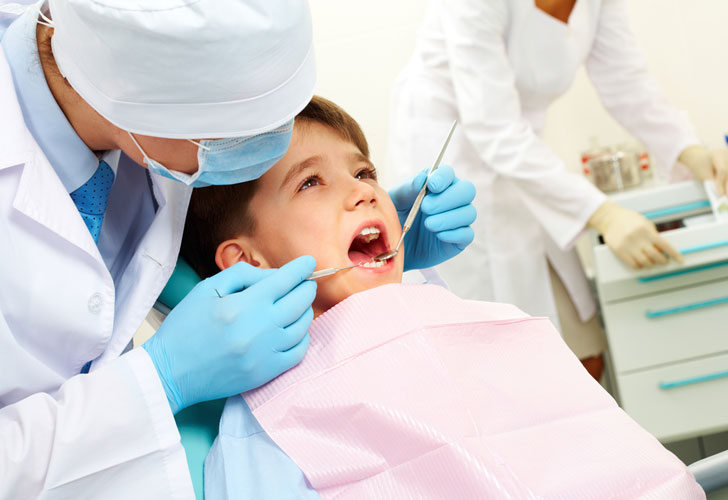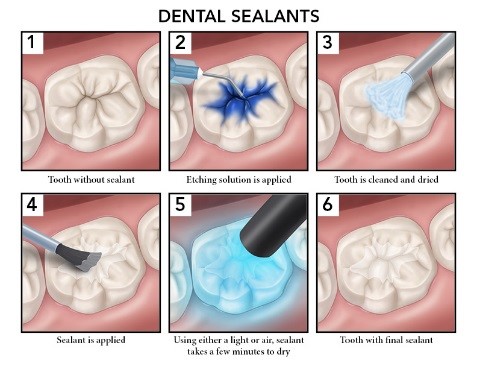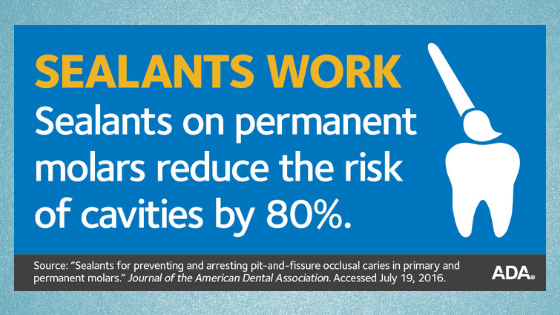As your child’s molars come in, your dentist may recommend dental sealants as a preventative measure against future tooth decay. At South Valley Pediatric Dentistry we suggest this simple, pain-free procedure as soon as your child’s six-year old molars erupt and again as twelve-year molars arrive. Sealants have been proven safe and effective in preventing tooth decay, but parents often have questions about their use, application and effectiveness.

Why get dental sealants?
Molars have deep ridges in their chewing surfaces, where food particles can stick, and many patients find it difficult to brush back molars thoroughly enough to keep these deep ridges clean. Sealants help keep food off of your tooth, preventing cavity-causing bacteria from growing where the sealant is applied. The American Dental Association recommends applying sealants to the teeth of all children and adolescents.
How are sealants applied?
 A dental assistant will apply your child’s sealants. The assistant will first clean and dry the tooth and apply a layer of gel which allows the sealant to stick. After a few seconds, the assistant will rinse the tooth, dry it thoroughly and apply a layer of plastic to protect the tooth. Lastly, the assistant will use a UV light to harden the sealant.
A dental assistant will apply your child’s sealants. The assistant will first clean and dry the tooth and apply a layer of gel which allows the sealant to stick. After a few seconds, the assistant will rinse the tooth, dry it thoroughly and apply a layer of plastic to protect the tooth. Lastly, the assistant will use a UV light to harden the sealant.
Will my child need sedation for sealants?
Sealants don’t require local anesthetic like fillings do, so many children are able to handle getting them without any trouble. Some patients with anxiety or special needs may not be able to sit still while sealants are applied. However, we only sedate children who need extensive dental restoration (fillings and crowns). Though sealants are an important preventive measure, and we use the safest sedation practices possible, the risks of sedation simply out-way the benefits of getting them done. However, if your child requires sedation for other dental work, we will usually also apply sealants while they’re asleep.
How much do sealants cost?
Sealant cost will vary by dental practice. Our office charges $40 per sealant. Most dental insurance policies cover them, at least in part, and many cover 100% of sealants. What’s more, paying for sealants can save you money, since cavities are much pricier to fix.
How effective are sealants?
Studies have shown sealants result in an 80% reduction in dental cavities. 
How safe are sealants?
Very safe! Some parents worry about the amount of BPA in sealants but according to the American Dental Association, children are exposed to higher levels of BPA from food, drink, sunscreen and shampoo than dental sealants. Sealants are safer and easier to apply than fillings, crowns and other dental restorations because dentists don’t have to numb the mouth, which carries some minor risks.
How have sealants worked for your family? Tell us more in the comments below or on Facebook!


